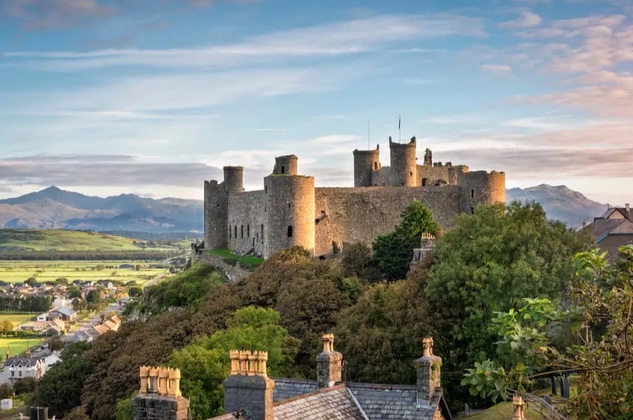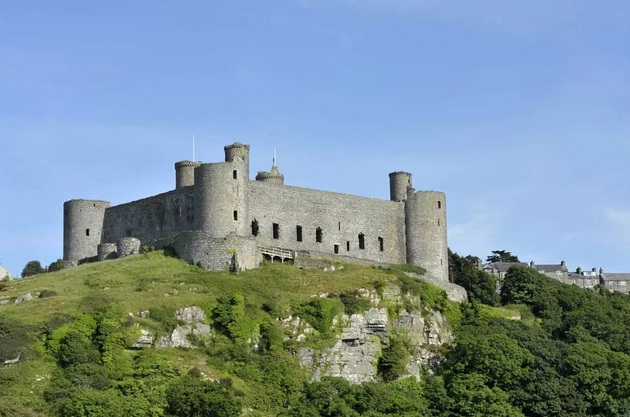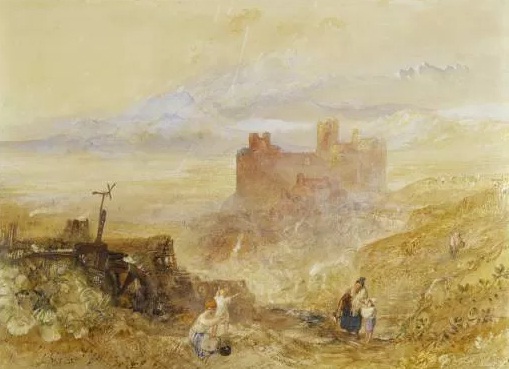
Harlech Castle looks out from an imposing rocky bluff, with the sheer peaks of Snowdonia as its backdrop. Located in North Wales, Harlech Castle has been awarded World Heritage Site status along with Caernarfon, Beaumaris and Conwy Castle.
Local legends place the site of Harlech Castle as the original site of the Welsh Princess Branwen, however no prior site has yet been found, so the mystery lives on. Read on to find out more about this dramatic castle and its prestigious history.
Where is Harlech Castle?
Harlech Castle is situated in Harlech, a bustling coastal town in Gwynedd, North Wales. Harlech Castle dominates the town’s skyline, ruling from its intimidating sheer crag. It is also central to the town, which makes Harlech Castle easily accessible by train, road, bus and bike.
In the past, Harlech was much closer to the coast and was accessible by sea. When it was built in 1282, the castle loomed over a cliff. Now the medieval fortress is landlocked, but by no means less spectacular. A new floating footbridge allows you to access the castle in the same way that the original owners would have done.
The History of Harlech Castle

Harlech Castle was built by Edward I during the invasion of Wales. It was constructed remarkably quickly for such a huge site, taking only seven years to build under the expertise of architect Master James of St George. The site was well-defended with several layers of walls, its highly elevated position, and close proximity to the sea.
The castle’s defences are arranged in a square design, and make the most of the natural defences of the area. The gatehouse is hugely fortified, with four towers on each corner adding extra defences to the strategic fortress. Harlech Castle was part of the ‘iron ring’ of English built castles designed to contain the Welsh during the English occupation.
Although the castle was built by an esteemed architect the moody waves took its toll on the castle. The castle required frequent repairs throughout the late 1290s and early 1300s.
During the Welsh rebellion under Madog ap Llywelyn, the castle held out for nearly two years due to its coastal position, with food and water coming in by ship to nourish the weary defenders. For the rest of the Middle Ages, the castle acted as a strong English defensive position until Owain Glyndŵr captured it and used it for his own home in the early 1400s.
The English eventually fought and recaptured the castle in 1409.
The castle has played a huge role in many significant British battles, including in the Wars of the Roses. Harlech Castle was held by the Lancastrians for almost a decade, until Yorkist troops took over the castle in the 1460s. Between 1461 to 1468 the castle was the home of another siege, which won the award of the longest known siege in British History.
The siege was captured in song, ‘The Men of Harlech’, in the 1800s and appeared in several films, including Zulu in the 1900s.
Harlech’s defences loom straight out of the rock face, making it a perfect defensive position. This attribute led it to become the last line of defence for Charles I in 1647. The castle hosted his loyal forces for another five years in yet another siege for the castle.
Harlech Castle Today

After 1647 the castle fell into disrepair, although it was depicted regularly by esteemed artists like John Turner. In the twentieth century, restoration finally began. Today, the site is owned by Cadw, the Welsh historical service. UNESCO has named the site one of the best examples of late thirteenth century military architecture in Europe.







Sé el primero en comentar